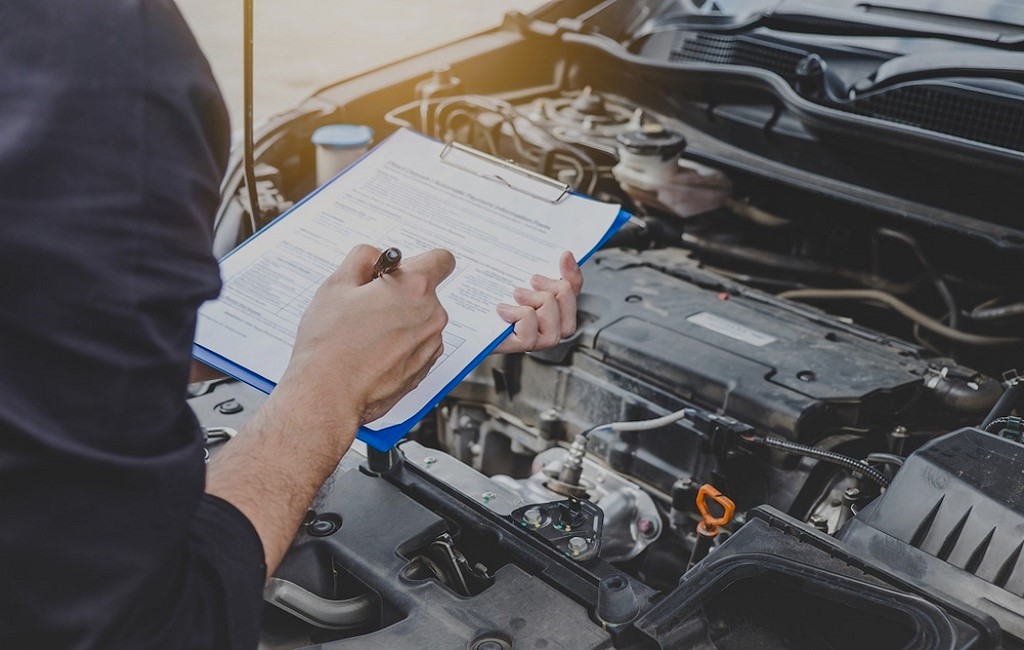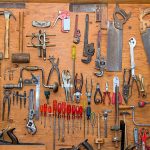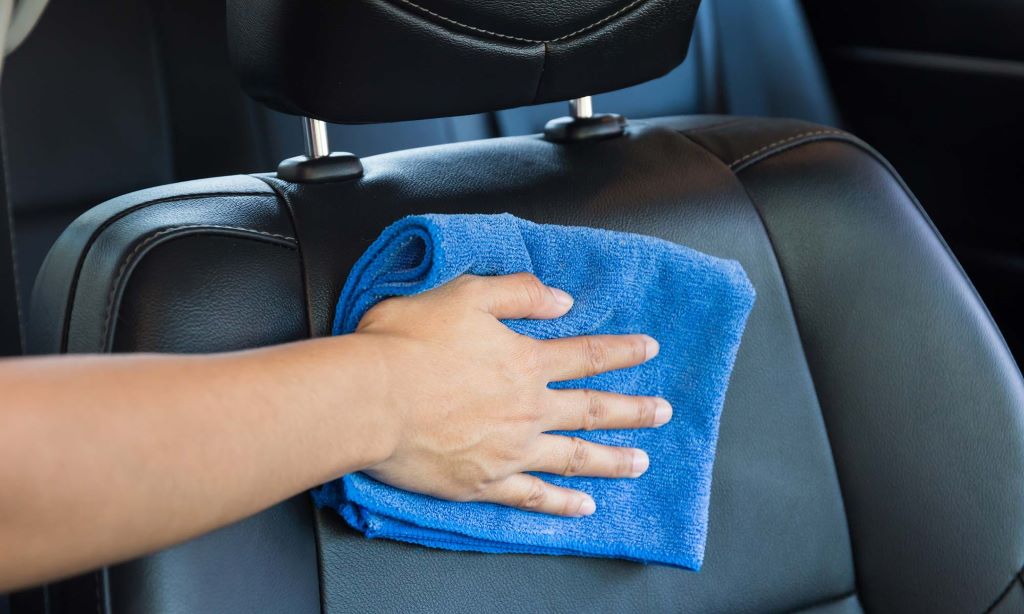Regular car maintenance is crucial to ensure optimum performance and longevity of your vehicle. This article provides essential tips for maintaining your car efficiently.
Your car is one of your most valuable investments, so it’s important to take care of it properly. Regular maintenance not only prevents breakdowns and costly repairs but also improves fuel efficiency and safety on the road. From checking tire pressure and changing engine oil to inspecting brakes and cleaning the interior, this article covers all the necessary car maintenance tips.
By following these guidelines, you can keep your car in excellent condition and save money in the long run. Remember, a well-maintained car not only performs better but also retains its value, making it a wise investment.
Essential Car Maintenance Tasks
Proper car maintenance ensures optimal performance, longevity, and safety on the road. Regularly performing essential car maintenance tasks can go a long way in preventing breakdowns and costly repairs. From regular oil changes to checking tire pressure, replacing air filters, maintaining the battery, and keeping an eye on fluid levels, these tasks are crucial for keeping your vehicle in top shape. In this blog post, we will dive into each of these essential car maintenance tasks and highlight their importance. So let’s get started!
Regular Oil Changes For Optimal Engine Performance
One of the most important tasks in car maintenance is getting regular oil changes. Engine oil lubricates the moving parts of your engine, keeping them running smoothly. Over time, oil can become contaminated with dirt, debris, and byproducts of combustion, leading to reduced engine performance and potential damage. Regularly changing your oil helps remove these impurities and ensures optimal engine performance. Aim to change your oil every 3,000 to 5,000 miles or as recommended by your vehicle’s manufacturer.
Checking And Maintaining Proper Tire Pressure
Proper tire pressure is not only crucial for your car’s performance but also for your safety. Underinflated or overinflated tires can affect your vehicle’s handling, fuel efficiency, and even cause tire blowouts. Regularly checking and maintaining proper tire pressure is essential. Refer to your vehicle’s owner’s manual or the sticker located inside the driver’s side door jamb for the recommended tire pressure. Use a reliable tire pressure gauge to check the pressure and add or release air as needed. Remember to check the spare tire as well.
Importance Of Replacing Air Filters
Air filters are responsible for keeping dirt, dust, and debris out of your engine and cabin. Over time, air filters can become clogged, restricting airflow and reducing engine performance. Keeping clean air filters in your vehicle is crucial for optimal engine efficiency, fuel economy, and clean air circulation inside the cabin. Make sure to replace both the engine air filter and the cabin air filter periodically. Consult your vehicle’s owner’s manual for the recommended replacement intervals.
Keeping The Battery In Good Condition
Your car’s battery is essential for starting the engine and powering various electrical components. A weak or dead battery can leave you stranded, especially in extreme weather conditions. To keep your battery in good condition, regularly inspect and clean the battery terminals, ensuring a good electrical connection. Check the battery’s fluid levels if applicable and top up with distilled water as needed. If you notice any signs of battery weakness, such as slow engine cranking or dim headlights, it’s time to consider replacing the battery.
Maintaining Proper Fluid Levels (Engine Oil, Coolant, Transmission Fluid, Etc.)
Fluids play a crucial role in your car’s overall performance and functionality. From engine oil to coolant and transmission fluid, each fluid has a specific function in keeping your vehicle running smoothly. Regularly check the fluid levels and ensure they are within the recommended range. Low fluid levels can lead to overheating, engine damage, and poor vehicle performance. Refer to your vehicle’s owner’s manual for instructions on checking and topping up the various fluids. Consider scheduling regular inspections and fluid flushes with a trusted mechanic to maintain optimum performance.
By performing these essential car maintenance tasks, you can ensure optimal performance, safety, and longevity for your vehicle. Regular oil changes, proper tire pressure, clean air filters, a well-maintained battery, and proper fluid levels are all key elements of responsible car ownership. So don’t neglect these tasks – your car will thank you!
Expert Hacks For Exterior Care
Maintaining the exterior of your car is essential not only for its aesthetic appeal but also for its longevity. Regular care and maintenance can protect your car’s paint, prevent scratches and swirl marks, and ensure its overall cleanliness. In this section, we will delve into some expert hacks that will help you achieve a spotless and well-protected car exterior.
Proper Washing And Drying Techniques To Maintain The Paint
When it comes to washing your car, using the correct technique can make all the difference in preserving its paint. Start by rinsing off any loose dirt and debris with a hose. Then, use a soft microfiber mitt or sponge and mild automotive shampoo to gently clean the surface. Avoid using household detergents as they can strip away the protective wax layer.
After thoroughly washing your car, it’s time to dry it properly. Using a microfiber drying towel, gently blot the surface to remove excess water. Avoid rubbing or scrubbing, as this can cause swirl marks. Finish by hand-drying any hard-to-reach areas with a microfiber cloth.
Applying Wax For Protection Against The Elements
Waxing your car provides an additional layer of protection against the elements, including harsh UV rays, dirt, and debris. Before applying wax, make sure the car’s surface is clean and dry. Start by applying a thin layer of wax using a foam applicator. Work in small sections, following the contours of your car.
Allow the wax to dry to a haze, as specified by the manufacturer’s instructions. Then, using a clean microfiber cloth, gently buff the waxed area in circular motions to achieve a glossy finish. Regular waxing will not only enhance your car’s shine but also extend the life of its paint.
Polishing And Buffing To Remove Scratches And Swirl Marks
Despite your best efforts to maintain your car’s exterior, scratches and swirl marks can still occur. Polishing and buffing can help minimize their appearance and restore the paint’s smoothness. Before polishing, ensure the surface is clean and dry.
Apply a small amount of automotive polishing compound to a foam or microfiber pad. Using a dual-action polisher, work the compound into the affected area in a back-and-forth motion. Start with a low speed and gradually increase it until you achieve the desired results.
Once the scratches and swirl marks have diminished, remove any residue with a clean microfiber cloth. Finish by applying wax to protect the freshly polished surface.
Tips For Maintaining Clean And Clear Windows And Mirrors
To maintain clear visibility, it’s crucial to keep your car’s windows and mirrors clean. Firstly, choose an automotive glass cleaner that is specifically designed for the task. Avoid using household cleaners that may leave streaks or damage the glass.
Spray the cleaner directly onto the glass surface and wipe it clean using a lint-free microfiber cloth or a newspaper. Ensure you reach all edges and corners for a thorough cleaning. For stubborn dirt or residue, use a gentle scrubbing motion with a clean cloth, taking care not to scratch the glass.
Protecting The Car From UV damage With Sunshades And Car Covers
Exposure to the sun’s harmful UV rays can fade the paint and cause damage over time. To protect your car’s exterior, consider investing in sunshades and car covers. Sunshades are easy to install and provide a barrier against direct sunlight, keeping the interior cooler and preventing the dashboard and seats from fading.
Car covers, on the other hand, offer all-around protection. Look for covers made of UV-resistant material that can withstand the elements. Ensure the cover fits your car snugly and is easy to put on and take off.
By following these expert hacks and incorporating them into your car maintenance routine, you can ensure your car’s exterior remains in optimal condition for years to come. From proper washing and drying techniques to waxing, polishing, and protecting against UV damage, these exterior care tips will keep your car looking fresh and protected.
Interior Car Care Tips
Looking to keep your car’s interior in top condition? Check out these essential car maintenance tips to ensure a clean and well-maintained cabin. Follow these tips to keep your car looking as good as new for longer.
Interior Car Care Tips Keeping the interior of your car clean and in top condition is just as important as maintaining its external appearance. With regular care and attention, you can ensure that your vehicle’s cabin remains fresh, comfortable, and free from dirt, dust, and unpleasant odors. Here are some effective methods and tips for interior car care that will help you keep your car’s interior looking and feeling great.
Effective Methods For Cleaning The Dashboard And Console
The dashboard and console area of your car are prone to collecting dust, dirt, and fingerprints. To keep them clean and shiny, follow these simple steps:
1. Use a microfiber cloth or a soft brush to remove loose dirt and dust from the surface.
2. Mix a mild cleaning solution by combining warm water and a small amount of gentle soap. Avoid using harsh detergents as they can damage the dashboard.
3. Dip a microfiber cloth into the cleaning solution and wring out any excess liquid.
4. Gently wipe the dashboard and console, paying attention to hard-to-reach areas and crevices.
5. For stubborn stains or sticky residue, use a specialized dashboard cleaner or a mixture of equal parts water and vinegar.
6. Finish by wiping the surface with a clean, dry microfiber cloth to remove any remaining moisture or streaks.
Vacuuming And Removing Dirt And Debris From Carpets And Upholstery
Regular vacuuming is essential for keeping your carpets and upholstered surfaces free from dirt, dust, and debris. Follow these steps to effectively clean your car’s carpets and upholstery:
1. Start by removing any loose objects such as floor mats, toys, or debris.
2. Use a handheld vacuum or an attachment with a brush or crevice tool to vacuum the carpets and upholstery thoroughly.
3. Pay special attention to the areas between and under the seats, as well as the edges of the carpet.
4. For stubborn stains on upholstery, use a fabric cleaner suitable for your car’s interior material. Test the cleaner on a small, inconspicuous area first to ensure it doesn’t cause any discoloration or damage.
Tips For Keeping Leather Seats In Top Condition
If your car has leather seats, proper care is essential to maintain their appearance and prevent them from cracking or fading. Here are some tips to keep your leather seats in top condition:
1. Regularly clean your leather seats using a mild leather cleaner or a mixture of warm water and a small amount of soap.
2. Gently wipe the seats with a soft cloth or sponge, taking care not to scrub too hard.
3. Remove any excess moisture with a clean, dry cloth.
4. Apply a high-quality leather conditioner to keep the seats soft and supple. Follow the manufacturer’s instructions for the application.
5. Avoid exposing your car’s leather seats to direct sunlight for extended periods, as it can cause fading and damage.
Eliminating Odors And Keeping The Cabin Fresh
Unpleasant odors can quickly make your car’s cabin uncomfortable. Follow these tips to eliminate odors and keep your car smelling fresh:
1. Regularly remove trash, food wrappers, and other items that may cause odors.
2. Use an odor-neutralizing spray or a fabric freshener to eliminate unpleasant smells.
3. Place an air freshener or a small container of baking soda in your car to absorb odors.
4. If there is a persistent odor, you can use an ozone generator or seek professional help to remove it.
Properly Maintaining The Air Conditioning System
Maintaining your car’s air conditioning system is essential for ensuring a comfortable and fresh cabin environment. Follow these steps to keep your air conditioning system in top condition:
1. Regularly clean or replace the cabin air filter to ensure proper airflow and prevent the buildup of dust and allergens.
2. Run the air conditioning system at least once a week, even during winter months, to prevent the growth of mold or mildew.
3. If you notice a decrease in cooling performance, unusual smells, or strange noises, have your air conditioning system inspected and serviced by a professional. Keeping your car’s interior clean and well-maintained not only enhances its overall appearance but also contributes to a more enjoyable and comfortable driving experience.
By following these interior car care tips, you can ensure that your vehicle’s cabin remains fresh, inviting, and in excellent condition for years to come.
Troubleshooting Common Car Issues
Keeping your car in top condition not only ensures your safety on the road but also helps to prevent costly repairs in the long run. However, even with regular maintenance, cars can develop common issues that require troubleshooting. In this section, we will discuss some common car problems and provide tips on how to diagnose and fix them.
Diagnosing And Fixing Common Engine Problems
When it comes to engine problems, early diagnosis is key to preventing further damage. Here are some common engine issues you may encounter:
- Engine misfire
- Overheating
- Oil leaks
- Strange noises or vibrations
To diagnose these engine problems, you can start by checking the engine codes using an OBD-II scanner. This will provide you with valuable information about the specific issue. Once you have identified the problem, you can take appropriate action:
- If you experience an engine misfire, check the ignition system, spark plugs, and fuel injectors. Replace any faulty components.
- If your engine is overheating, check the coolant levels, radiator fan, and thermostat. Replace or repair any damaged parts.
- If you notice oil leaks, inspect the gaskets, seals, and oil pan. Replace any worn-out parts and ensure proper tightening.
- If you hear strange noises or vibrations, it could be a sign of worn-out belts, pulleys, or engine mounts. Replace the faulty components.
Troubleshooting Electrical Issues And Faulty Wiring
Electrical problems in your car can cause various issues, including malfunctioning lights, power windows, and stereo systems. Here’s how you can troubleshoot common electrical issues:
- Check the fuse box for any blown fuses. Replace with new fuses of the correct amperage.
- Inspect the wiring for any signs of damage, such as frayed or loose connections. Repair or replace faulty wiring as needed.
- Ensure that all electrical components are properly grounded. Clean and tighten any loose connections.
- Test the battery voltage using a multimeter. If the voltage is low, recharge or replace the battery.
How To Address Brake Problems And Ensure Optimal Performance
Brakes are crucial for your safety on the road. If you notice any of the following issues, it’s essential to address them promptly:
- Squeaking or grinding noises
- Poor braking performance
- Soft or spongy brake pedal
- The brake warning light on the dashboard
To troubleshoot brake problems, consider the following steps:
- Inspect the brake pads and rotor discs for wear. Replace them if necessary.
- Bleed the brake lines to remove air bubbles and restore braking performance.
- Check the brake fluid level. If it’s low, top it up with the recommended type of brake fluid.
- Examine the brake calipers for any signs of damage or sticking. Replace or repair as needed.
Dealing With Suspension And Steering Issues
Issues with your car’s suspension and steering can affect its handling and stability. Keep an eye out for the following symptoms:
- Excessive bouncing or noise when driving over bumps
- Uneven tire wear
- Tight steering or difficulty in turning
- Vehicle pulling to one side
To address suspension and steering problems, consider the following troubleshooting steps:
- Inspect the suspension components, such as shocks, struts, and control arms, for any signs of wear or damage. Replace as necessary.
- Check the tire pressure and alignment. Adjust them if needed to ensure even tire wear and proper steering response.
- Examine the power steering system for any leaks or damaged components. Repair or replace as required.
Fixing Common Problems With The Exhaust System
Your car’s exhaust system plays a crucial role in reducing emissions and maintaining engine performance. Here are some common exhaust system issues to watch out for:
- Excessive smoke from the tailpipe
- Loud exhaust noise or rattling
- Decreased fuel efficiency
- Check engine light indicating an issue with the catalytic converter
To fix these exhaust system problems, consider taking the following steps:
- Inspect the exhaust system for any leaks, cracks, or loose connections. Repair or replace damaged components.
- Check the oxygen sensors for proper functioning. Replace any faulty sensors.
- If you suspect a problem with the catalytic converter, consult a professional mechanic for diagnosis and potential replacement.
Expert Hacks For Driving Efficiency
Driving efficiently not only helps you save money on fuel costs but also reduces your carbon footprint. With a few expert hacks, you can improve your car’s fuel efficiency, extend the lifespan of key components, and optimize overall performance. In this section, we will explore some essential tips to help you drive efficiently and get the most out of your vehicle.
Fuel-saving Techniques For Better Mileage
Maximizing your car’s fuel economy doesn’t always require complex modifications or expensive upgrades. Here are some simple yet effective fuel-saving techniques you can easily implement:
- Drive at a consistent speed and avoid unnecessary acceleration or sudden braking to minimize fuel consumption and wear on your brakes. This also includes avoiding idling, as it wastes fuel.
- Maintain a moderate and steady speed during highway driving, as excessive speed can significantly impact fuel efficiency. Stick to the posted speed limits for optimum results.
- Remove any unnecessary weight from your car, such as heavy items in the trunk or on the roof, as added weight increases fuel consumption.
- Utilize cruise control on long, uninterrupted stretches of road to help maintain a steady speed and improve fuel efficiency.
Maintaining Proper Tire Alignment And Balance
Proper tire alignment and balance are crucial not only for your safety but also for driving efficiency. Misaligned or unbalanced tires can increase rolling resistance, leading to decreased fuel economy and premature tire wear. A regular tire alignment and balance check will help:
- Ensure even tread wear, extending the life of your tires and reducing the frequency of replacements.
- Improve handling, stability, and overall road performance for a smoother and more enjoyable driving experience.
- Enhance fuel efficiency by reducing rolling resistance and minimizing engine strain.
Tips For Driving In A Fuel-efficient Manner
In addition to fuel-saving techniques, there are several driving habits you can adopt to further enhance your car’s fuel efficiency:
- Avoid unnecessary idling, such as waiting for extended periods with the engine running. Turn off your engine if you anticipate being stationary for more than a minute.
- Anticipate traffic conditions and plan your route accordingly to avoid congestion and stop-and-go traffic, which consume more fuel.
- Use your car’s momentum wisely by coasting to a stop, rather than accelerating and then braking abruptly.
- Gradually accelerate and decelerate whenever possible to minimize fuel consumption.
The Importance Of Regular Engine Tune-ups
Regular engine tune-ups are vital for maintaining optimal performance, fuel efficiency, and reliability. Here’s why you should never overlook this essential aspect of car maintenance:
- Identify and address mechanical issues early on, preventing them from escalating into more significant and costly problems.
- Ensure your engine is running at peak efficiency, maximizing fuel economy and reducing emissions.
- Keep ignition and fuel systems in optimal condition, promoting smoother operation and better overall performance.
Maximizing The Lifespan Of Your Car’s Brake Pads And Rotors
Brakes are among the most critical safety components of your vehicle, and proper maintenance is crucial for both safety and efficiency. Follow these tips to help extend the lifespan of your car’s brake pads and rotors:
- Avoid aggressive braking whenever possible, as harsh stops can wear out your brake pads faster and strain the overall brake system.
- Anticipate traffic and minimize sudden stops by maintaining a safe distance from the vehicle ahead of you.
- Regularly inspect your brake system for any signs of damage, such as squealing sounds, vibrations, or decreased stopping power.
- Follow the manufacturer’s recommendations for brake pad replacement intervals and have them inspected regularly to ensure they are still within safe limits.
Frequently Asked Questions On Car Maintenance Tips
Q: How Often Should I Change My Car’s Oil?
A: It is recommended to change your car’s oil every 3,000 to 5,000 miles or every 3 to 6 months, depending on your vehicle and driving conditions. Regular oil changes help maintain engine performance and prolong its lifespan.
Q: What Are The Signs Of A Failing Battery?
A: Signs of a failing car battery include difficulty starting the engine, dim headlights, electrical issues, and a battery warning light on the dashboard. If you experience these symptoms, it’s best to have your battery tested and replaced if needed to avoid unexpected breakdowns.
Q: How Often Should I Replace My Car’s Tires?
A: Typically, car tires should be replaced every 6 to 10 years, depending on their condition and usage. It is also important to check the tire tread depth regularly and replace tires when they are worn down to 2/32 of an inch to maintain optimal grip and safety on the road.
Q: What Is The Recommended Tire Pressure For My Car?
A: The recommended tire pressure can be found in your vehicle’s owner’s manual or on a sticker located on the driver’s side doorjamb. It is important to maintain proper tire pressure, typically between 30 to 35 psi, as underinflated or overinflated tires can affect handling, fuel efficiency, and tire lifespan.
Conclusion
Following these car maintenance tips is essential to ensure your vehicle’s longevity and optimal performance. Regularly checking fluids, inspecting tires, changing filters, and scheduling routine maintenance can save you time and money in the long run. By prioritizing car care, you’ll enjoy a smoother driving experience and avoid costly repairs.
Remember, a well-maintained car is a safe and reliable one. Stay proactive and take care of your car’s needs to enjoy hassle-free journeys on the road.





